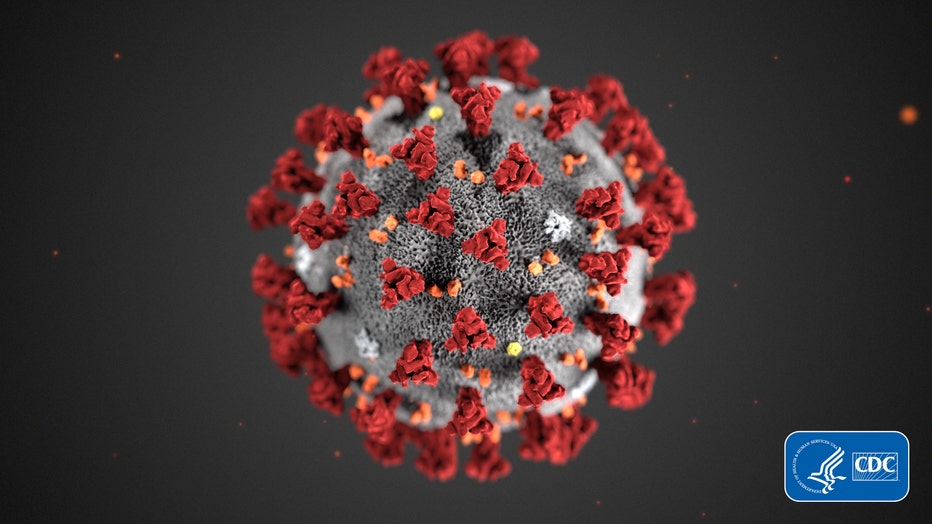Scientists say COVID-19 mutation more contagious than original strain is increasing at ‘alarming rate’
LOS ANGELES - Researchers at Los Alamos National Laboratory say they have identified 14 new mutations of the novel coronavirus that first originated in Wuhan, China in hopes of creating an early warning system to reveal new strains that may render future vaccines ineffective.
One mutation that is of urgent concern to researchers is called “mutation spike D614G” which scientists say first appeared in February in Europe and became dominant strain across the world by mid-March.

FILE - This illustration, created at the Centers for Disease Control and Prevention (CDC), reveals ultrastructural morphology exhibited by coronaviruses, including the novel coronavirus identified as the cause of an outbreak of respiratory illness fi (Photo by Smith Collection/Gado/Getty Images)
RELATED: CoronavirusNOW.com, FOX launches national hub for COVID-19 news and updates
The study notes that by the time the new strain was being tracked by the Global Initiative for Sharing All Influenza Data (GISAID), a German public-private organization aimed at sharing data related to influenza and the coronavirus, it was found in 29 percent of the global samples, but almost exclusively in Europe.
The spike refers to COVID-19’s commonly observed exterior spike structure that allows the virus to attach itself to host cells. After analyzing data from over 6,000 novel coronavirus sequences from around the world, researchers believe the virus’ spikes have mutated, adding to the efficiency in which the virus spreads.
Authors of the study added that the newly mutated spikes make the virus more contagious and researchers are concerned that if the mutation can increase the rate at which the virus spreads, the severity of the disease may increase.
RELATED: Contact tracing: Process could prove pivotal in lifting widespread COVID-19 stay-at-home orders
“D614G is increasing in frequency at an alarming rate, indicating a fitness advantage relative to the original Wuhan strain that enables more rapid spread,” researchers write.
The adaptation of the virus’ spikes presents a challenge for a possible vaccine which may not be effective on these new mutations.
RELATED: CDC indicates that people can spread novel coronavirus to pets in some situations
One of the main concerns researchers have is not knowing whether or not COVID-19 cases would decrease seasonally with warmer weather as summer approaches, allowing the virus leeway to continue to develop new strains over time.
According to the Los Angeles Times, one of the study’s lead authors, Bette Korber, wrote about the research on her Facebook page, saying, “The story is worrying, as we see a mutated form of the virus very rapidly emerging, and over the month of March becoming the dominant pandemic form.”
“When viruses with this mutation enter a population, they rapidly begin to take over the local epidemic, thus they are more transmissible,” Korber added.


